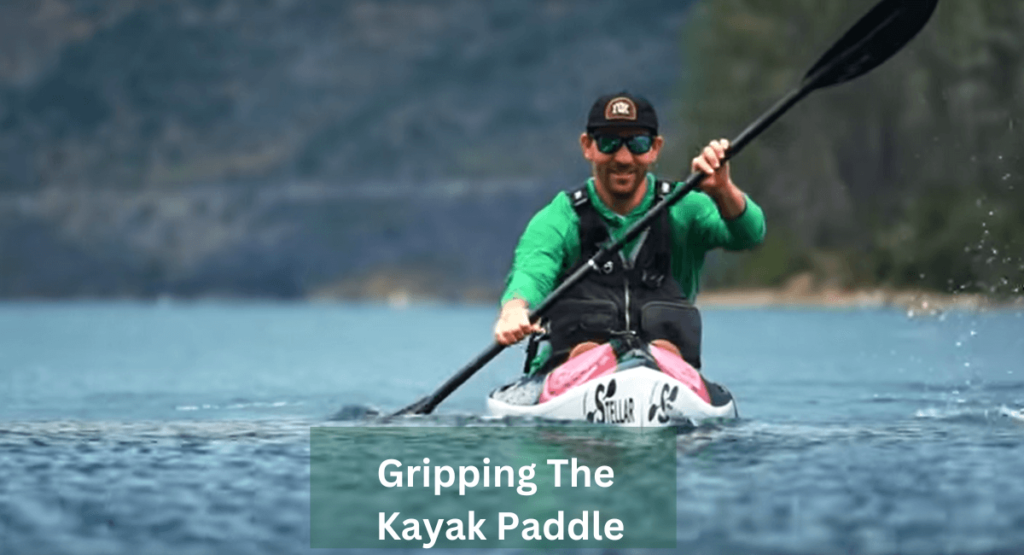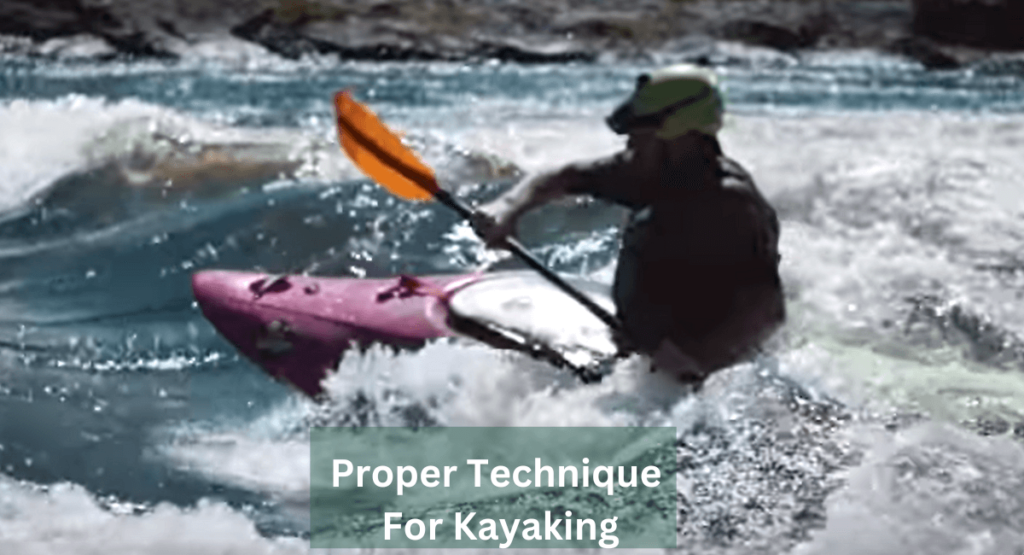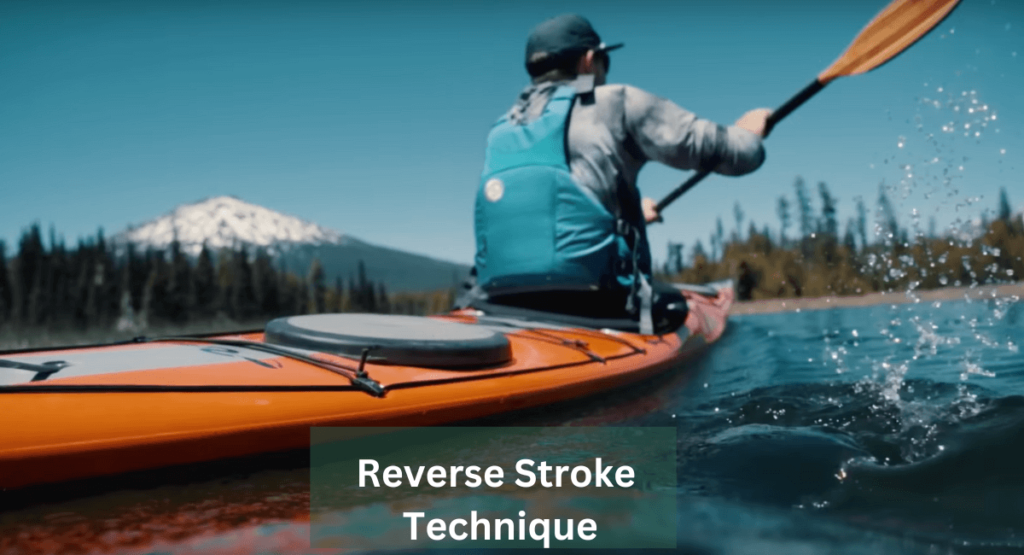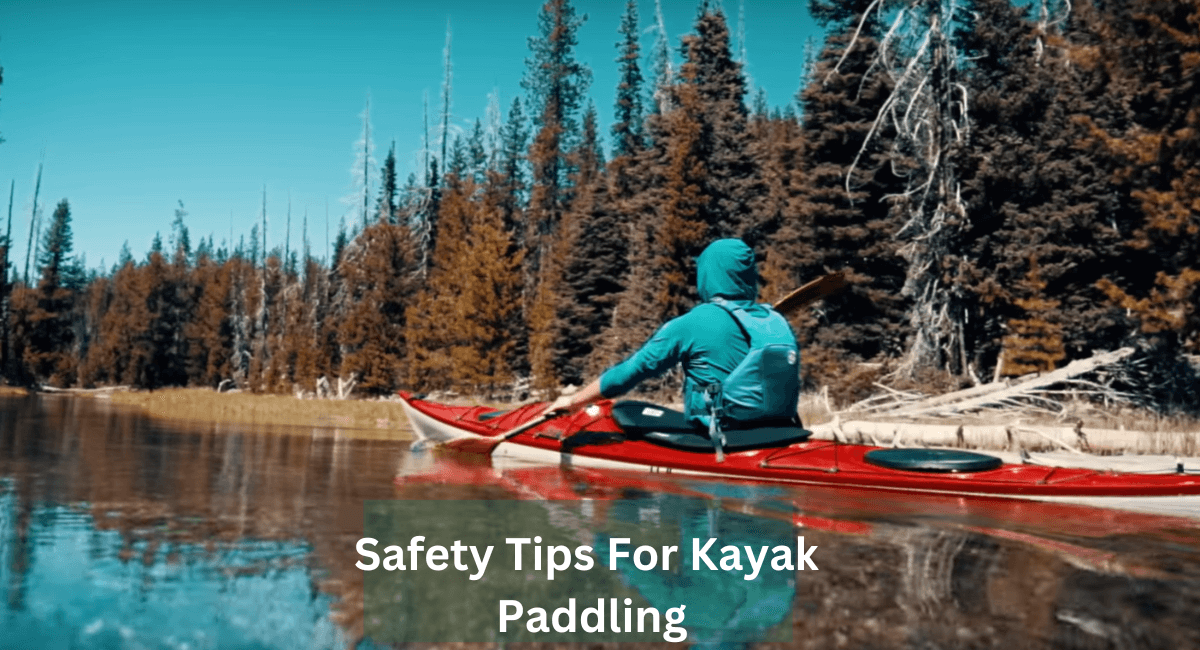To use a kayak paddle properly, sit upright, hold the paddle shoulder-width apart, and use torso rotation for power. When paddling, keep the blades perpendicular to the water surface for efficiency and switch sides regularly to prevent strain.
Kayaking is a thrilling outdoor activity enjoyed by many water enthusiasts. To fully enjoy the experience and maneuver through the water efficiently, knowing how to properly use a kayak paddle is essential. In this guide, we will provide you with all the essential tips and techniques you need to make the most of your kayaking adventure.
From holding the paddle correctly to executing powerful strokes, mastering the art of paddling will enhance your overall kayaking experience. So, let’s dive into the proper way to use a kayak paddle and take your paddling skills to the next level.
Choosing The Right Kayak Paddle
When using a kayak paddle, it’s important to hold the paddle with both hands and keep your elbows slightly bent. Use a smooth, fluid motion to propel the kayak forward, and try to keep the paddle close to the side of the kayak to reduce strain on your arms.
Adjust the length of your paddle to ensure it’s suitable for your height and the type of kayaking you’ll be doing.
Choosing the Right Kayak Paddle Consider the Paddle Length When choosing your kayak paddle, consider the importance of selecting the right length. The paddle length determines how efficiently you can propel your kayak in the water. When sitting in your kayak, the most common rule of thumb is to have the paddle’s grip reach your wrist when your arm is raised above your head.
A longer paddle provides more leverage, ideal for wider kayaks or taller paddlers. While a shorter paddle favors a lower stroke cadence, suitable for narrower kayaks or shorter individuals. Selecting the Blade Shape The blade shape of your kayak paddle affects your efficiency and comfort while paddling.
Consider the shape of the blades when making your selection. Blades come in various shapes, including high-angle and low-angle. High-angle blades are more aggressive, and designed for a dynamic paddling experience. Low-angle blades provide a smoother stroke, ideal for relaxed paddling. Ensure the blade shape aligns with your paddling style and goals, enhancing your performance on the water.
Gripping The Kayak Paddle

Mastering the proper technique of gripping the kayak paddle is crucial for a seamless kayaking experience. By following the correct hand positioning and using a firm but relaxed grip, paddlers can optimize their stroke power and maneuverability on the water.
So, grab that paddle with confidence and embark on your kayaking adventures!
Determining Hand Placement
Determining hand placement is crucial for the proper use of a kayak paddle. Always place your hand at the base of the paddle grip, ensuring a secure hold.
Adjusting The Feathering Angle
Adjusting the feathering angle of your kayak paddle can enhance your paddling experience. Experiment with different angles to find what works best for you. Gripping the kayak paddle correctly is essential for an efficient and enjoyable paddling experience. Your hands should be placed on the paddle grip in a firm and comfortable manner.
To determine the proper hand placement, position one hand at the base of the paddle grip and the other hand slightly up the shaft. This balanced grip allows for better control and power during strokes. Adjusting the feathering angle of the paddle can also impact your paddling performance. Try different angles to see what feels most comfortable and efficient for you.
Proper Technique For Kayaking

Kayaking is a popular outdoor activity that offers a great workout and a chance to explore beautiful waterways. To fully enjoy this activity and avoid strains or injuries, it’s important to master the proper technique for kayaking. From using your core muscles for power to maintaining a proper posture, there are key elements that can help you paddle effectively and efficiently.
Using Core Muscles For Power
When kayaking, it’s essential to use your core muscles to generate power and propel yourself through the water. Avoid relying solely on your arms; instead, engage your abdominal and back muscles to maximize your paddling strength. Focus on rotating your torso with each stroke, allowing your core to drive the movement.
Maintaining A Proper Posture
Keeping a proper posture is crucial for efficient and comfortable kayaking. Sit up straight with your back supported by the kayak seat and your feet positioned against the footrests. This position allows you to maintain stability and distribute the effort of paddling evenly throughout your body.
Forward Stroke Paddling
Kayaking is not just about exploring serene waters; it’s also about understanding the proper technique to maximize your efficiency and power. The forward stroke paddling technique is one of the fundamental skills every kayaker should master. This technique allows you to move forward in a straight line, giving you better control over your kayak. To help you perfect your forward stroke paddling, we will explore two key phases: the entry point and catch phase, and the power phase and exit.
Entry Point And Catch Phase
In the entry point and catch phase, you set the foundation for an effective forward stroke. Here’s how to execute this phase correctly:
- Make sure your grip on the paddle is firm and relaxed.
- Position your upper hand shoulder-width apart for maximum control.
- Reach forward with your upper arm extended, using your core muscles to rotate your torso slightly.
- Dip the paddle into the water quietly, ensuring the blade is fully submerged.
- Once the blade is in the water, engage your lower hand to create a firm connection with the water.
Power Phase And Exit
The power phase and exit are crucial to generating momentum and propelling your kayak forward. Follow these steps to optimize your power phase and exit:
- Engage your core, back, and shoulder muscles to generate power as you pull the paddle towards you.
- Rotate your torso, using the power from your core muscles to drive the paddle through the water.
- As you pull the paddle back, keep the blade close to the boat to maintain stability.
- Once your upper hand reaches your hip, release the paddle from the water.
Remember to maintain a smooth, fluid motion throughout the forward stroke, avoiding any jerky or abrupt movements. Additionally, ensure that your paddle blade is properly positioned in the water to maximize efficiency and reduce resistance. With practice, you’ll be able to master the forward-stroke paddling technique and enjoy smoother and more efficient kayaking adventures.
Reverse Stroke Technique

Kayaking is a popular water sport that offers a thrilling and adventurous experience. To maneuver your kayak effectively, it is essential to master various paddle strokes. One such technique is the Reverse Stroke, which allows you to slow down or stop your kayak efficiently. In this article, we will guide you through the proper execution of the Reverse Stroke technique and how it helps in controlling the direction of your kayak.
Execution Of The Stroke
The Reverse Stroke is performed by using the kayak paddle in the opposite direction, similar to a regular forward stroke but with a different hand position. To execute this stroke:
- Start by positioning your paddle behind you, with the blade facing away from you.
- Place your hands shoulder-width apart on the paddle shaft, with your palms facing upward.
- As you begin the stroke, rotate your torso towards the side you want to turn.
- Engage your core muscles to initiate the power for the stroke.
- Submerge the blade of the paddle fully into the water, ensuring the entire surface area of the blade is in contact with the water.
- With a sweeping motion, pull the paddle towards the back of the kayak, allowing the water to push against the blade and propel the kayak in the desired direction.
- As you complete the stroke, lift the paddle out of the water and reset your hand position for the next stroke.
Remember to maintain a relaxed grip on the paddle and avoid gripping it too tightly, as this can cause unnecessary strain on your wrists and arms.
Controlling The Kayak Direction
The Reverse Stroke technique is an excellent method for controlling the direction of your kayak. When executed correctly, it can help you:
- Slow down or stop your kayak quickly, providing you with better control in tight or congested waterways.
- Maneuver around obstacles such as rocks or branches.
- Reverse your kayak smoothly, enabling you to change directions swiftly.
- Correct your course if you find yourself heading in the wrong direction.
By mastering the Reverse Stroke technique, you will gain more confidence in your kayaking abilities and be able to navigate various water conditions with ease.
Sweep Stroke For Turning
The sweep stroke is an essential paddling technique for turning a kayak efficiently. This stroke allows paddlers to quickly change the direction of their kayak, making it a valuable skill for maneuvering through tight spaces or navigating around obstacles.
Turning The Kayak Efficiently
When executing a sweep stroke, the key to turning the kayak efficiently is to utilize the full range of motion of the paddle. The arc created by the paddle’s movement should be wide, extending from the bow to the stern of the kayak. This wide stroke provides the necessary propulsion to pivot the kayak effectively.
Using Proper Body Rotation
To enhance the efficiency of the sweep stroke, proper body rotation is crucial. Engaging the core muscles and rotating the torso allows paddlers to maximize the power and reach of their paddle stroke. By using the entire upper body, rather than just the arms, paddlers can generate more force and control during the turning maneuver.
High-Brace And Low-Brace Techniques
High Brace Technique: Use a high brace when tipping towards to regain balance.
Low Brace Technique: Employ a low brace to prevent capsizing.
Maintaining Stability In Rough Waters
Stay steady in rough waters by using the correct paddle techniques.
Avoiding Capsizing
Prevent capsizing through proper high and low brace maneuvers.
Safety Tips For Kayak Paddling

Learn how to properly use a kayak paddle with these essential safety tips. Follow these guidelines for a safe and enjoyable paddling experience.
Wearing A Personal Flotation Device (PFD)
Always wear a Personal Flotation Device (PFD) when kayaking.
Ensure the PFD fits snugly and is properly fastened.
Check the condition of your PFD before every kayaking trip.
Being Aware Of Surrounding Conditions
Stay alert and aware of changing weather conditions.
Keep an eye out for obstacles and other watercraft in your vicinity.
Be cautious of strong currents and tides that may affect your paddling.
Frequently Asked Questions On Proper Way To Use Kayak Paddle
What Is The Proper Way To Hold A Kayak Paddle?
To hold a kayak paddle properly, place one hand near the top of the paddle and the other hand slightly further down. Keep your elbows slightly bent and maintain a comfortable grip to ensure control and avoid strain on your arms and shoulders.
How Do I Determine The Right Kayak Paddle Length For Me?
The proper kayak paddle length is determined by your height and the width of your kayak. A general rule of thumb is that the most suitable paddle length for recreational kayaking is typically your height plus the width of the kayak, plus a few inches for a comfortable stroke.
What Are The Different Types Of Kayak Paddle Strokes?
The primary types of kayak paddle strokes are the forward stroke, sweep stroke, draw stroke, and reverse stroke. Each stroke is essential for maneuvering and propelling the kayak efficiently, providing a more enjoyable experience on the water. Learning and mastering these techniques will enhance your kayaking skills.
Conclusion
Incorporating the proper techniques when using a kayak paddle is essential for an enjoyable and efficient paddling experience. By mastering the correct grip, stroke technique, and body positioning, you can enhance your kayaking skills and prevent unnecessary strain or injury.
With consistent practice and adherence to these guidelines, you can confidently and safely navigate the waterways with your kayak.
